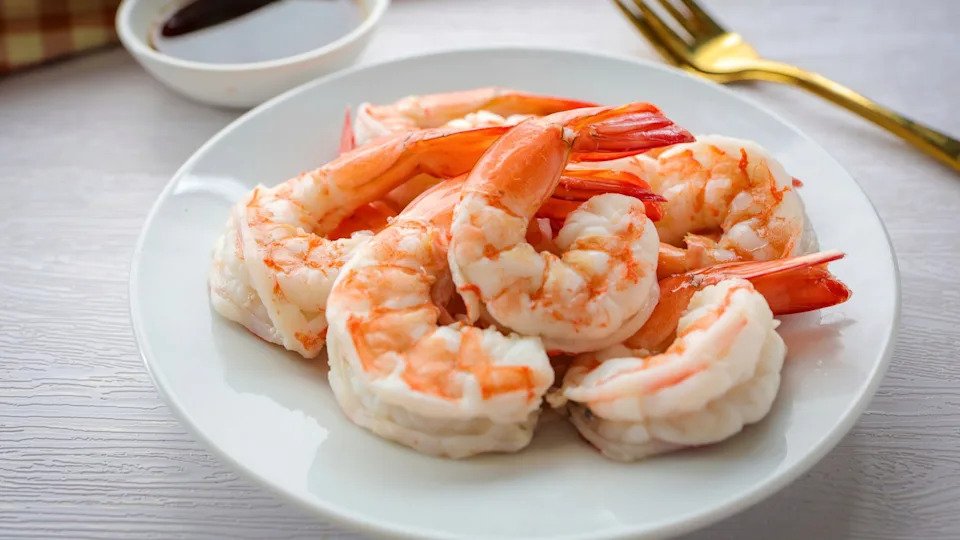Vitamin D and magnesium may get all the buzz, but vitamin E deserves attention too. This fat-soluble vitamin helps protect your body, supporting the immune system and reducing inflammation. And while most healthy adults can get enough of this key nutrient through food, the best vitamin E supplement can be a helpful tool for people with restrictive diets or those managing certain conditions.
But first, what exactly is vitamin E? “Vitamin E is a powerful antioxidant that helps protect your cells from damage caused by free radicals,” says Lauren Manaker, RDN, LD and owner of Nutrition Now Counseling. “It also supports your immune system, helps maintain healthy skin and plays a role in keeping your blood vessels functioning properly.” In other words? “Think of it as a protective shield for your body’s cells,” says Manaker. And that’s not all. According to Seema Shah, RD and owner of SeemaShahRD Whole Nutrition, vitamin E may also reduce both the intensity and length of menstrual cramp pain.
You can find vitamin E naturally in foods like nuts, seeds and plant-based oils, as well as supplements. While not necessary or appropriate for everyone, vitamin E supplements may be helpful for people with very restrictive diets, increased nutritional needs or certain conditions that affect the body’s ability to digest and absorb fat, such as:
-
Abetalipoproteinemia (a rare genetic disorder)
-
Ataxia and vitamin E deficiency (AVED, an inherited disorder)
Table of contents
A note on supplements
The products included on this list are dietary supplements. Statements about these products have not been evaluated by the Food and Drug Administration. These products are not intended to diagnose, treat, cure, or prevent any disease. Dietary supplements are not appropriate for everyone and may interact with other supplements or medications, so talk to your health care provider before adding a dietary supplement to your routine.
Best overall vitamin E supplement
Form: Soft gel | Dosage: 1 soft gel per day | Type of vitamin E: D–alpha tocopherol | Vitamin E per serving (%DV): 268 mg (1787%) | Standout features: Easy to swallow, third-party tested, affordable
For a high-quality vitamin E supplement that’s easy to swallow and budget-friendly, look no further than our best overall option: Life Extension Super Vitamin E. Requiring just one soft gel per day, each serving delivers 268 mg (400 IU) of d-alpha tocopherol — a natural form of vitamin E — sourced from sunflower oil. This form is more bioavailable than synthetic versions, meaning your body can absorb and use it more efficiently. Plus, at less than $0.20 per dose and with third-party testing, it’s an affordable option that doesn’t compromise on quality.
While there was a slight fishy odor — something I noticed with nearly every soft gel vitamin E supplement I tested — the capsules themselves had no taste or aftertaste. Thanks to their small size and smooth, soft gel design, they were easy to swallow with just a sip of water, which is a big plus if you typically struggle with larger pills.
I also liked the short, no-nonsense ingredient list — a bonus for anyone trying to avoid unnecessary fillers or additives. That said, the use of gelatin means it’s not suitable for vegetarians or vegans. Otherwise, it fits most dietary preferences, with no added sugars or artificial sweeteners.
It’s worth noting that at 268 mg per serving, this supplement provides 1787% of the daily value (DV). While well below the tolerable upper intake level of 1,000 mg (1,500 IU) per day, the dose is still on the higher side and should be discussed with a health care professional before taking.
- Natural form of vitamin E
- Third-party tested for purity and potency
- Affordable
- Easy to swallow
- One-a-day formulation
- No taste or aftertaste
- Contains gelatin
- Slight fishy smell
- High dose may not be appropriate for everyone
More vitamin E supplements we like for 2025
Form: Soft gel | Dosage: 1 soft gel per day | Type of vitamin E: D-alpha tocopherol | Vitamin E per serving (%DV): 134 mg (893%) | Standout features: Affordable, relatively low dose
NOW Foods Vitamin E-200 delivers 134 mg of natural vitamin E in small, easy-to-swallow soft gels with no taste or aftertaste, making daily use simple. It’s an affordable option — under $15 for 100 servings— and delivers solid quality for the price. The only real downsides are a mild fishy odor when opening the bottle and the use of gelatin, which makes it unsuitable for vegetarians.
NOW Foods supplements are extensively tested for purity and potency in ISO-certified, in-house labs. However, testing results aren’t confirmed by third-party labs. Still, for anyone looking for a high-quality, budget-friendly vitamin E supplement, it’s a dependable pick.
- Affordable
- Easy to swallow
- Manufactured in ISO-certified labs
- Slight fishy odor
- Contains gelatin
- Isn’t third-party tested for purity and potency
Form: Soft gel | Dosage: 1 soft gel twice per day | Type of vitamin E: D-alpha tocopherol, mixed tocotrienols | Vitamin E per serving (%DV): 13.4 mg (89%) | Standout features: Multiple types of vitamin E, lower dose than many other products
Unlike many vitamin E supplements, Doctor’s Best Vitamin E contains just 89% of the DV for vitamin E, making it a good option if you’re simply looking to fill gaps in your diet. It also includes 50 mg of mixed tocotrienols, which may have benefits for heart health. While technically a form of vitamin E, tocotrienols are metabolized and stored differently and don’t count toward the recommended daily allowance (RDA) for vitamin E.
In addition to its lower dose, I liked how easy the supplement was to take. Yes, there was a little fishiness when opening the bottle, but I had zero issues with taste or aftertaste. Another benefit? Doctor’s Best supplements are third-party tested for purity and potency and carefully formulated based on the latest peer-reviewed research.
One 5-star Amazon reviewer sums up the product well: “No smell, easy to swallow and great value.”
- Lower-dose option
- Third-party tested for purity and potency
- Good value
- Includes both d-alpha tocopherol and mixed tocotienols
- Contains gelatin
- Dose may be too low for some
Form: Capsule | Dosage: 1 capsule per day | Type of vitamin E: D-alpha tocopheryl succinate | Vitamin E per serving (%DV): 268 mg (1787%) | Standout features: Vegan-friendly, dry formulation for those with fat absorption issues
Dry vitamin E supplements are a great option for people who have trouble digesting fats or oils. Unlike the typical oil-based soft gels, dry vitamin E comes in a powder-based capsule that’s easier on the stomach and free of added fats. If you’re looking for a fat-free, gentle alternative, The Vitamin Shoppe Dry E is an excellent choice.
Besides being easy to digest, this supplement stands out as one of the few vegan-friendly options thanks to the absence of gelatin, dairy and other animal products. It was also one of the only products I tested that didn’t have a fishy odor. Each capsule-size dose delivers 268 mg of d-alpha tocopheryl succinate and is free from gluten, dairy and artificial colors and flavors. The biggest drawback is the capsule itself, which, while not large, didn’t go down quite as easily as the smaller, soft gel capsules I tried.
To round it out, this product is third-party tested for purity and potency, making it a solid, reliable option for anyone who is plant-based or needs an oil-free formulation.
- Affordable
- Third-party tested for purity and potency
- No fishy odor
- Vegan-friendly
- Dry formulation
- Larger capsule size
- Does not contain mixed tocopherols or tocotrienols
Form: Soft gel | Dosage: 1 soft gel per day | Type of vitamin E: D-alpha tocopherol, high gamma tocopherol blend (d–gamma, d-delta and d-beta tocopherol) | Vitamin E per serving (%DV): 268 mg (1333%) | Standout features: Gamma tocopherol blend, minimal odor
A.C. Grace Company’s Unique E takes the top spot for “best mixed tocopherol” thanks to its potent 432 mg blend of gamma-rich tocopherols. This combo offers more comprehensive antioxidant support, and emerging research suggests that gamma tocopherol may be especially helpful in reducing oxidative stress and inflammation — potentially offering benefits beyond what alpha tocopherol alone can do, though more human studies are needed to confirm.
The formula is straightforward, with no unnecessary additives, and it’s third-party tested for purity and potency. Unlike many soft gels, these have almost no odor, which is a big plus if you’re sensitive to smells. Despite their larger size, I was pleasantly surprised at how easy they were to swallow. That said, if you generally have trouble with pills, they could still be a bit of a challenge. They’re tasteless, with no aftertaste, but do contain gelatin — so they’re not suitable for vegans or vegetarians.
At about $0.48 per dose, it’s a solid value for a high-quality, well-rounded vitamin E supplement, especially if you’re looking for one that’s low on odor but high on antioxidant diversity.
- Third-party tested for purity and potency
- Mixed tocopherols
- Minimal odor
- Affordable
- Contains gelatin
- Large pill size
Comparison table
Here’s a quick side-by-side comparison to help you decide which vitamin E supplement might be right for you:
|
Form |
Dose |
Amount per serving |
Standout features |
|
|
Life Extension Super Vitamin E |
Soft gel |
1 per day |
268 mg |
Easy to swallow Third-party tested Affordable |
|
NOW Foods Vitamin E-200 |
Soft gel |
1 per day |
134 mg |
Affordable Easy to swallow ISO-certified labs |
|
Doctor’s Best Vitamin E |
Soft gel |
2 per day |
13.4 mg |
Third-party tested Includes tocotienols |
|
The Vitamin Shoppe Dry Vitamin E |
Capsule |
1 per day |
268 mg |
Oil-free Vegan-friendly Third-party tested Affordable |
|
A.C. Grace Company Unique E |
Soft gel |
1 per day |
268 mg |
Third-party tested Includes mixed tocopherols Minimal odor Affordable |
How much vitamin E do you need?
For healthy adults, it’s recommended to consume 15 mg of vitamin E per day, unless you’re lactating, in which case your needs are slightly higher at 19 mg per day. The good news is that most healthy adults are able to meet this goal through foods like nuts, seeds, peanuts and some fruits and vegetables.
Here are some of the best sources of vitamin E and how much of this key nutrient they provide:
-
Sunflower seeds: 1 ounce = 7.4 mg (49% DV)
-
Almonds: 1 ounce = 6.8 mg (45% DV)
-
Sunflower oil: 1 tablespoon = 5.6 mg (37% DV)
-
Peanut butter: 2 tablespoons = 2.9 mg (19% DV)
-
Spinach: 1/2 cup cooked = 1.9 mg (13% DV)
-
Kiwifruit: 1 medium = 1.1 mg (7% DV)
Because vitamin E is a fat-soluble vitamin, consuming excess amounts through supplements can be toxic. To reduce your risk of adverse effects, it’s recommended to consume no more than 1,000 mg per day.
Synthetic vs. natural vitamin E: What’s the difference?
When shopping for supplements, it often feels like you need a dictionary — or good ol’ Google — at your fingertips, and vitamin E supplements are no exception. Here are some terms you might come across, and what they actually mean:
-
Tocopherols: Vitamin E isn’t just a single nutrient — it’s actually a whole family of antioxidant compounds. The most well-known members of this group are tocopherols, which come in several forms, including alpha, beta, gamma and delta. While alpha-tocopherol gets most of the spotlight (and is most common in supplements), blends that include other types may offer a wider range of antioxidant benefits.
-
D-alpha tocopherol: Sometimes simply labeled as “natural vitamin E,” d-alpha tocopherol is frequently found in vitamin E supplements and is the form that the Recommended Dietary Allowance (RDA) for vitamin E is based on. It’s typically derived from plant oils and is “better absorbed, recognized and utilized by the body compared to synthetic,” says Shah.
-
Gamma-tocopherol: Another natural form of vitamin E, gamma-tocopherol is widely found in the diet and may offer unique benefits for protecting against damage caused by free radicals.
-
Tocotrienols: Tocotrienols are the other major group in the vitamin E family. Although they’re not as common in our diets — or as well studied — as tocopherols, research shows promise. A 2022 article in BioFactors suggests that tocotrienols may help protect against certain types of cancer. Similarly, a 2023 review in Cureus found they might support heart health. While these early findings are encouraging, more research is needed to fully understand the benefits of tocotrienols.
-
Synthetic vitamin E (aka dl-alpha tocopherol): This form of vitamin E is made in a lab. While supplements containing this form are typically less expensive, synthetic vitamin E isn’t as easy to absorb, meaning you may need to consume larger amounts to get the same benefits.
How to choose the best vitamin E supplement for you
Not all vitamin E supplements are created equal, so knowing what to look for can help you choose a safe and effective option.
-
Vitamin E type: Bioavailability matters when it comes to vitamin E, so it’s worth choosing the natural form: Look for d-alpha tocopherol, d-alpha tocopheryl acetate or d-alpha tocopheryl succinate on the label. These are better absorbed than the synthetic version, dl-alpha tocopherol, which your body doesn’t use as efficiently. While some early research suggests that other natural forms of vitamin E might offer extra benefits, d-alpha tocopherol is the most studied — and it’s the form used to set the RDA.
-
Dose: Adults need 15 mg of vitamin E per day, yet many supplements provide well over this amount. To reduce the risk of side effects, look for supplements with 540 mg (800 IU) or less — and never more than 1,000 mg — of natural vitamin E per day, unless recommended otherwise by a health care professional.
-
Supplement form: Vitamin E supplements typically come in pill form, with soft gels being more expensive, but generally easier to swallow than tablets. That said, liquid, chewable and gummy versions also exist. Ultimately, the best form is the one you can take safely and consistently.
-
Other ingredients: Especially if you have food allergies or follow a specific diet, make sure to review the ingredient list to ensure a supplement fits your needs. Manaker also recommends avoiding products with unnecessary fillers or additives. In other words? The shorter the ingredient list, the better.
-
Third-party testing: To ensure a supplement contains what it claims to on the label, look for products that have been tested for purity and potency, ideally by a third-party organization like United States Pharmacopeia (USP) or NSF.
-
Price: You don’t need to splurge on the most expensive supplement. Instead, look for an option that fits your budget without compromising on key factors, like vitamin E type, ingredients and testing.
Potential side effects and safety concerns
Vitamin E has a few important caveats to be aware of, as taking it in supplement form may not be safe or appropriate for everyone — especially when taken in high doses.
-
It may increase bleeding risk: According to Dr. Erica Park, “taking high doses in supplement form, especially over 300 mg a day, can increase the risk of bleeding.” For this reason, vitamin E supplements should not be combined with blood-thinning medications, like aspirin or warfarin, unless under medical supervision.
-
It may interact with other medications: In addition to blood thinners, Park notes that vitamin E supplements may affect how well other medications, like tamoxifen or cyclosporine, work. “If you’re on medications or going through cancer treatment, check with your doctor before taking vitamin E supplements,” she says.
-
It may cause side effects: Common side effects of vitamin E supplements include nausea, fatigue, headaches, diarrhea and stomach cramps. “Some people may also have skin reactions if using it in creams or oils,” Park adds.
-
It can be toxic: Excess vitamin E can build up in your body and have serious health consequences. To reduce this risk, avoid consuming more than 1,000 mg of vitamin E from supplements per day.
How we chose
We put 18 vitamin E supplements to the test. (Sarah Glinski, RD)
(Sarah Glinski, RD)
To guide the selection process, I consulted with two fellow registered dietitians and a medical doctor to get their expert take on what really matters when choosing a vitamin E supplement. As a registered dietitian myself, I also drew on my own clinical experience and knowledge of supplements to evaluate each product through both a scientific and practical lens.
In total, I tested 18 vitamin E supplements from 11 different brands, reviewing each one carefully to bring you a list of the best options currently on the market. Since we couldn’t directly test the long-term health benefits of each supplement (that kind of research would take months, if not years), we focused on practical factors you can evaluate right away, including:
-
Ease of use: We evaluated how simple the packaging was to open, whether the instructions were clear and straightforward and how easy the soft gels or capsules were to swallow.
-
Taste and aftertaste: We noted whether the supplement had any noticeable flavor or aftertaste and considered whether it might be unpleasant or off-putting for regular use.
-
Form of vitamin E: We prioritized supplements that used the natural form of vitamin E (d-alpha tocopherol) and noted when products included additional natural tocopherols, which may offer broader antioxidant support.
-
Dosage appropriateness: We assessed whether the vitamin E dosage stayed within safe limits—ideally 540 mg (800 IU) or less per serving — to minimize the risk of side effects from long-term use.
-
Ingredient quality: We reviewed the full ingredient list for unnecessary fillers, artificial additives or allergens that might limit suitability for people with specific dietary needs.
-
Overall value: We compared cost per serving across products to determine which options delivered the best balance of quality and affordability.
-
Testing and transparency: We looked for products tested for label accuracy and purity, giving preference to those with third-party certification for added trustworthiness.
Other products we tested
Not every supplement we tested made the final cut, but several came close — and could still be a solid choice depending on your needs. Here’s a quick look at the vitamin E supplements that just missed our top list:
-
NOW Foods Vegetarian Dry E-400: This budget-friendly vitamin E capsule is a solid option for those needing a dry (aka oil-free) formulation. It scored high in our testing thanks to its ease of use, lack of fishy odor and affordability. All NOW supplements undergo extensive in-house testing at ISO-accredited labs. However, because it isn’t third-party tested, The Vitamin Shoppe’s Dry Vitamin E earned our pick as the “best oil-free.”
-
NOW Foods E-400 With Mixed Tocopherols: Like NOW Foods’ Dry E, this supplement performed well during testing. However, it isn’t third-party testing, and we simply liked other products more.
-
NOW Foods Vitamin E Oil: This vitamin E supplement is affordable and could be a good alternative for those who dislike pills. However, it was challenging to determine the exact number of drops dispensed, making it difficult to know if I was taking an accurate dose.
-
The Vitamin Shoppe E 268 mg (400 IU): At just $0.16 per serving, this supplement nearly made our list as “best affordable” thanks to its small, easy-to-swallow soft gels and third-party testing for purity and potency. It features highly bioavailable d-alpha tocopherol plus mixed tocopherols for broader antioxidant support, though specific amounts aren’t listed. Aside from a mild fishy odor common in gelatin-based capsules, it’s a user-friendly, budget-friendly pick for daily vitamin E supplementation.
-
The Vitamin Shoppe High Gamma Vitamin E With Mixed Tocopherols: While we liked the formulation and found the soft gels easy to swallow, this supplement had a strong fishy odor that was hard to ignore.
-
KAL Vitamin E 200 IU: Kal supplements is a lesser-known supplement brand. Based in Utah, products are manufactured in the United States and feature carefully selected ingredients. I liked how easy the brand’s vitamin E 200 IU supplement was to take and its minimal ingredient list. However, the product contains gelatin and isn’t third-party tested for purity and potency.
-
KAL Vitamin E 400 IU: This supplement was also easy to take, but there were other, more affordable options in this dosage range that were third-party tested for label accuracy.
-
KAL Vitamin E 1,000 IU: High-dose vitamin E supplements may increase the risk of hemorrhagic stroke and are not recommended for most people. For this reason, they should only be taken under the guidance of a health care professional. If medically appropriate, this high-dose vitamin E supplement offers a potent, affordable and easy-to-swallow option with highly bioavailable d-alpha tocopherol. However, it’s not third-party tested, has a mild fishy odor and isn’t suitable for vegans.
-
GNC Vitamin E: While very affordable, it contains the synthetic form of vitamin E (dl-alpha tocopherol), which is not as bioavailable.
-
Nature’s Bounty Vitamin E-1000 Pure dl-Alpha: Like the GNC supplement, this supplement contains the synthetic form of vitamin E, which is not as easily absorbed by the body.
-
Metagenics Vitamin E Mixed Tocopherols: There’s a lot to like about this vitamin E supplement: Third-party tested for purity and potency, d-alpha-tocopherol, mixed tocopherols and relatively short ingredient list. However, it isn’t vegan-friendly and is significantly more expensive than other supplements we tried.
-
Standard Process Cataplex E: This supplement contains a blend of vitamin E and selenium, which work together to support overall health. However, the dose of vitamin E provided is quite small — just 3.3 mg or 22% of the daily value. While it might be helpful for bridging gaps in an otherwise healthy diet, you could easily get this amount from food rather than spending money on a supplement.
-
Oleaphen High Phenolic Olive Oil: Oleaphen High Phenolic Olive Oil is specifically formulated to be high in vitamin E, delivering 140 mg per 5 mL serving, along with heart-healthy polyphenols and phytosterols. It’s a flavorful, vegan-friendly way to add a nutritious drizzle of vitamin E to meals, though its strong peppery taste and high cost may not work for everyone. Still, it’s an excellent option for those seeking a natural, whole-food approach to boosting vitamin E intake.
FAQs
What is the best form of vitamin E for absorption?
“The best-absorbed form of vitamin E is called d–alpha tocopherol,” says Park, adding that this is the natural form your body prefers. “It’s even better absorbed when taken with a meal that has some healthy fat,” she explains, “like avocado or olive oil.” Keep in mind that many vitamin E supplements contain oil or another source of fat. If you have a condition that affects fat absorption, look for products labeled as “dry” vitamin E, a fat-free formulation designed to be gentle on the stomach.
Should I take vitamin E with food?
Yes, for optimal absorption, vitamin E should be taken with food, ideally a meal containing some fat. This is because vitamin E is a fat-soluble vitamin and requires fat for proper absorption in the body. (See our favorite healthy olive oils.)
Can vitamin E help improve skin or hair health?
Vitamin E plays an important role in maintaining healthy skin and hair, largely thanks to its antioxidant properties. A 2021 review in PLOS One found that people with inflammatory skin conditions like psoriasis, eczema and acne often had lower blood levels of vitamin E. In such cases, supplementation may help support skin health. However, for otherwise healthy individuals, the benefits of oral vitamin E for skin aren’t well established — and when it comes to hair, research hasn’t shown that taking vitamin E supplements leads to noticeable improvements.
Do vitamin E supplements increase the risk for prostate cancer?
An older study from 2011, known as the SELECT trial, raised concerns after finding a 17% increased risk of prostate cancer in men who took vitamin E supplements regularly for seven years. However, according to the National Cancer Institute, there’s still not enough solid evidence to say whether vitamin E supplements increase the risk of prostate cancer. For personalized guidance, talk with a health care professional to determine whether vitamin E supplements are appropriate for you — particularly if you have a history of prostate cancer or are at increased risk.
Meet our experts
-
Lauren Manaker, RDN, LD and owner of Nutrition Now Counseling
-
Seema Shah, registered dietitian and owner of SeemaShahRD Whole Nutrition
-
Erica Park, MD, MBA, FAAPMR, board-certified physician
Our health content is for informational purposes only and is not intended as professional medical advice. Consult a medical professional on questions about your health.






